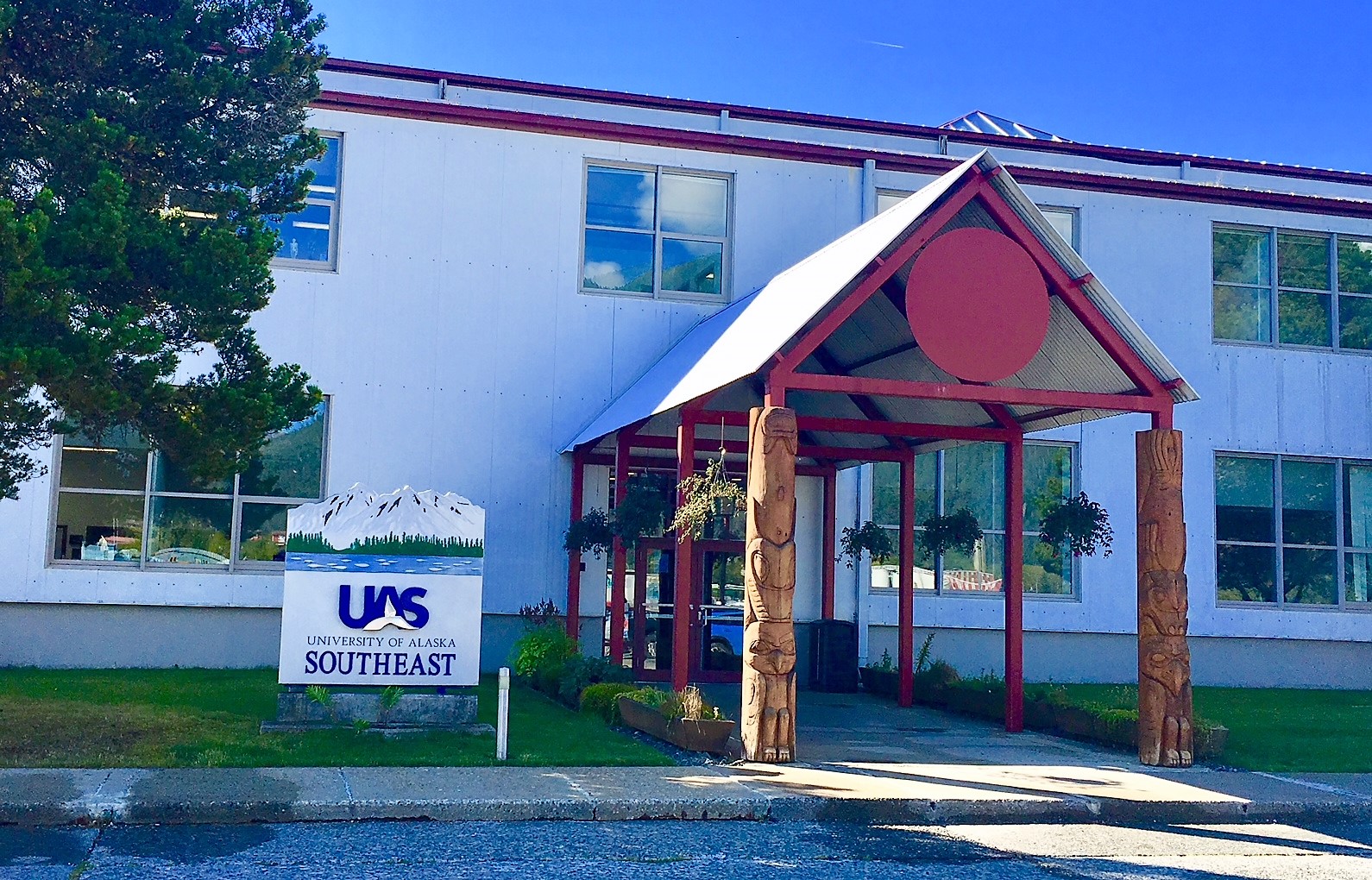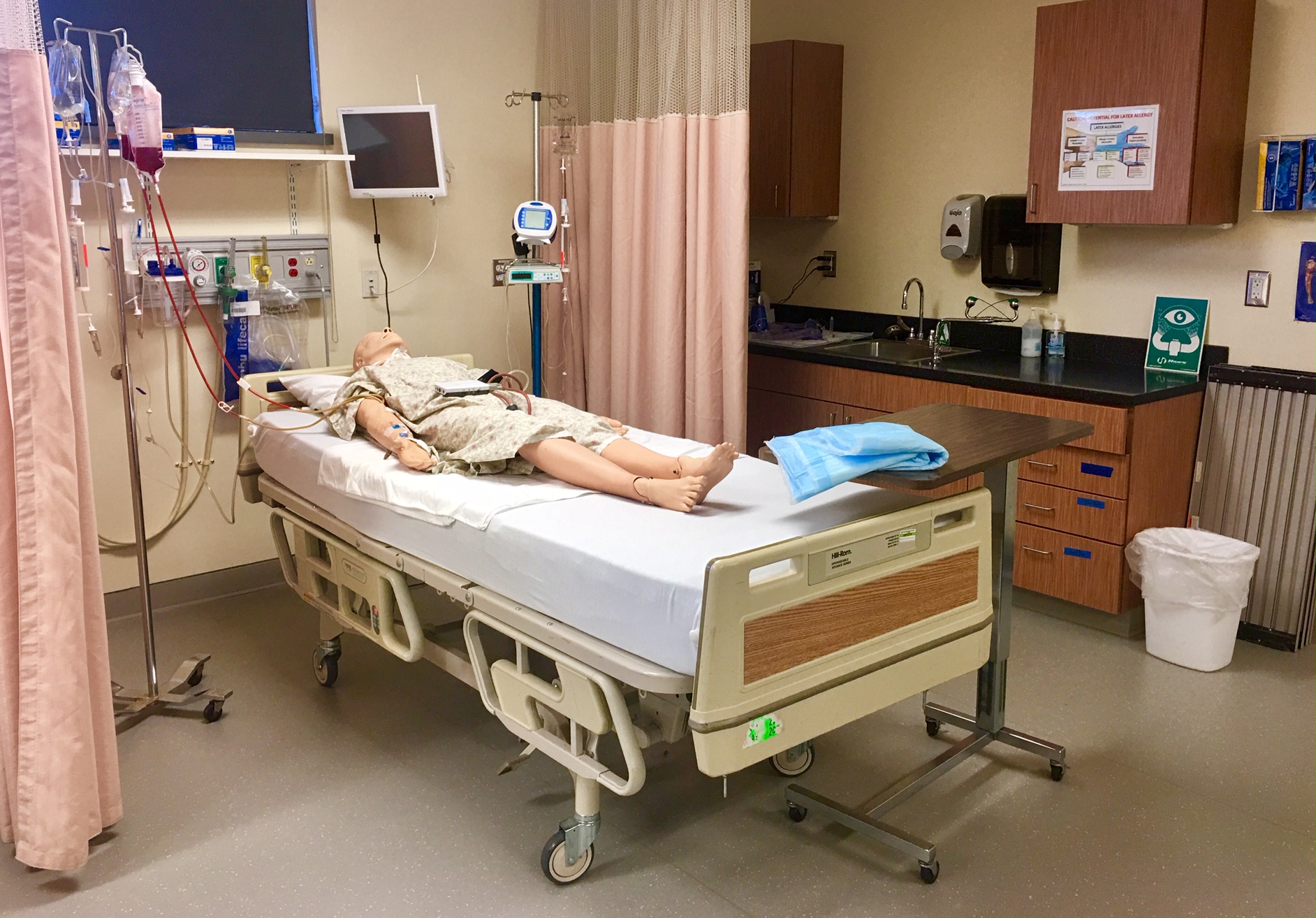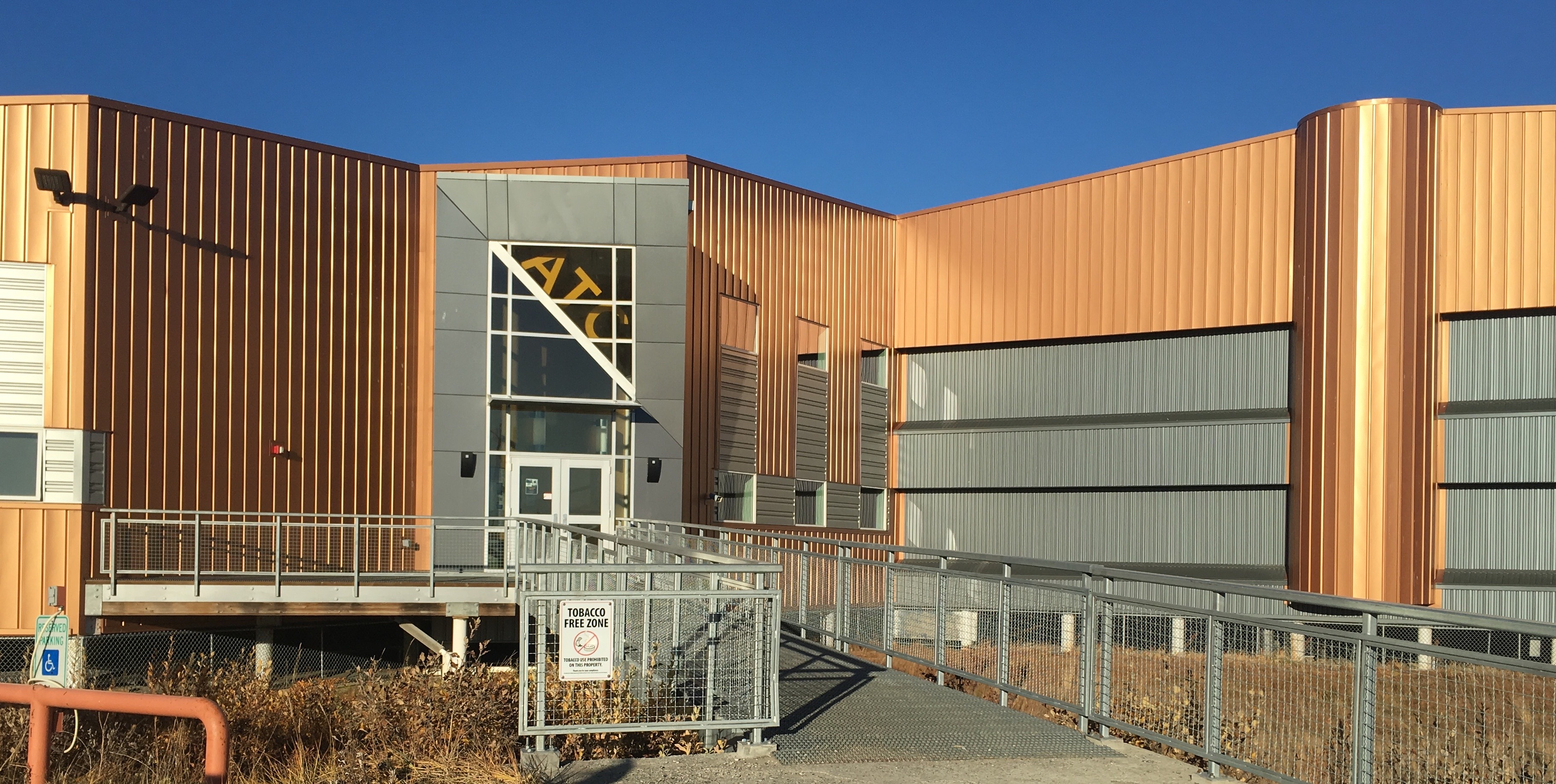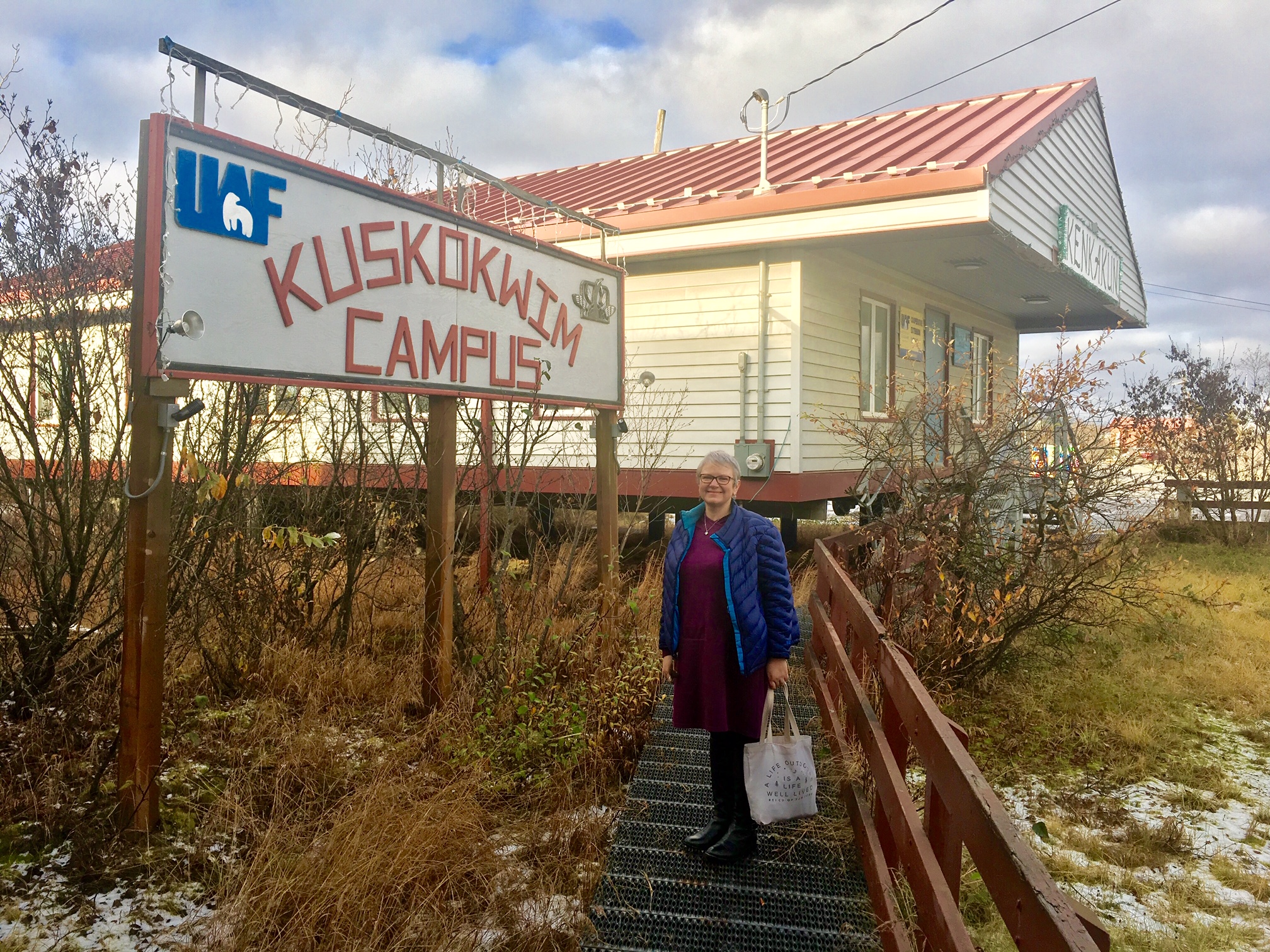UAA Celebrates Healthcare Simulation Week 2022
by Vicki Nechodomu |
Simulation is changing the way healthcare professionals learn and improve patient care
The University of Alaska Anchorage Interprofessional Health Sciences Simulation Center (IHSSC) invites the UAA and broader Anchorage community to join the global celebration of Healthcare Simulation Week September 12-16, 2022.
The UAA IHSSC is housed in the Health Sciences Building and is composed of three high fidelity simulation rooms and a control room where their team provides interprofessional simulations through manikin-based and actor-based scenarios.
“The adoption of simulation in healthcare education allows learners to practice and apply information taught in the classroom in carefully created, realistic patient care scenarios; in a safe environment for both the learner and the patient,” said Gavin Gardner, Director of the UAA Interprofessional Health Sciences Simulation Center. “By utilizing the tools, techniques, and strategies available in simulation, students can engage in the delivery of patient care while ensuring there is no risk to the patient. Students can make mistakes and learn from them before ever stepping foot into a healthcare setting.”
“Simulation opportunities have supplemented and enhanced clinical learning experiences, by fostering and developing critical thinking skills, utilizing experiential learning and guided by structured debriefings,” said School of Nursing assistant professor Pete Varney.
A State-Wide Interprofessional Impact
The UAA simulation center supports educational programs throughout the university and Alaskan communities through partnerships with diverse clients including other universities, hospitals, and community-based programs. In a truly unique Alaska challenge, this vision places the IHSSC in the position to support 15 campus sites spread across 430,000 square miles.
“These sites are each unique with their own set of circumstances and challenges and we are there to help them deliver high quality simulation,” said Gardner. The center provides simulation support to 17 academic programs including clinical, community, and behavioral health fields such as nursing, medicine, occupational therapy, physical therapy assisting, medical laboratory sciences, pharmacy, social work, and psychology.
“What makes UAA’s simulation model unique is its emphasis on diversity and inclusion and integrating students from across the state to collaborate on structured, active learning scenarios,” said Varney.
Adapting to Community Needs during a Global Pandemic
In March 2020, the COVID-19 pandemic led to the closure of UAA campus, classes were migrated to online delivery, and the Simulation Center was faced by a new challenge: how to continue delivering realistic simulation experiences during a global pandemic, particularly to students in health programs where patient contact is absolutely necessary.
The IHSSC team developed a telehealth-like simulation model that provides clinical experiences and allows students and performers to be within the safety of their homes while meeting learning objectives. Conventional avatar-based simulation involves participants using a computer-generated avatar to navigate a fully digital environment. The IHSSC adapted this methodology so teams of up to six students at remote locations can participate in clinical simulations. In this model, one student of the group is the designated on-campus “Avatar.” The remaining members, or “Brain Trust,” participate in the activity remotely via web conferencing. The simulated encounter utilizes manikins or actors and are hosted in one or more of the UAA-based Simulation Center suites or in the simulation lab area of a community campus site across the state.
This new model not only allowed the continuation of student engagement in simulation throughout the pandemic, it also expanded the center’s geographic reach and learner contact hours. The IHSSC saw a 44% increase of learner contact hours from fall 2020 to spring 2021 and an 89% increase from spring 2021 to fall 2021.
“This methodology not only helped the students stay on track during a worldwide health crisis, but also introduced a novel way to increase simulation capability and conduct robust simulation,” said Gardner.
Using this new model, nursing student participation increased 2.5 times, expanding to include students from all of the School of Nursing’s 15 sites. Simulations were structured so that each team was made up of students from up to four different campus sites.
Varney has facilitated nursing simulations at numerous rural community campus network sites and witnessed the impact the new model has had on student connectedness. “The inclusion of students from all campuses in the School of Nursing led to a newfound sense of community among the students in a time of separation and isolation,” he said.
Excellence in a New Era
Healthcare Simulation Week, sponsored by the Society for Simulation in Healthcare, celebrates professionals who use healthcare simulation to improve the safety, effectiveness, and efficiency of healthcare delivery. The week serves as an opportunity to educate the public about the new and emerging methods and technologies that are improving healthcare education and patient care.
“Healthcare simulation continues to grow at an extraordinary rate,” said SSH President Bob Armstrong. “An increasing number of professionals in the healthcare industry are waking up to simulation’s ability to help individuals and organizations improve patient care, which is so great to witness. We want to celebrate both that increased role and all healthcare simulation professionals this week.”
“The healthcare industry has never before been able to learn and practice complicated and high risk situations without the inherent risk to the patient. Now, by utilizing simulation we can reduce the risk to the patient. By helping our current and future healthcare providers improve their own practice and skill we have a direct and immeasurable impact on the patients our students will one day serve. And if you ask me, that's a pretty awesome legacy,” said Gardner.
The UAA Interprofessional Health Sciences Simulation Center team invites the Anchorage community to join them in celebrating healthcare simulation this week:
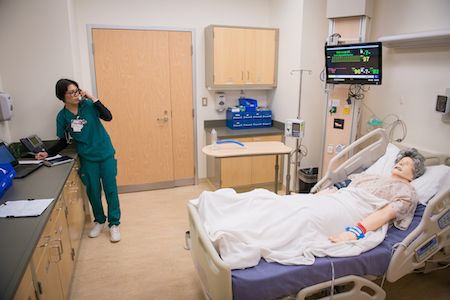
Drop-in Tours
Come by the Interprofessional Health Sciences Simulation Center for a tour of our
facilities! You’ll have the opportunity to meet the manikins, help name two of the
center’s new manikins, help deliver a (simulated) baby, and participate in a CPR competition.
Drop-in tours are available Sept. 13, 14, and 16 from 9:00 a.m. - 1:00 p.m in the
UAA Health Sciences Building, 3795 Piper Street, Rm 209, Anchorage, AK 99508.
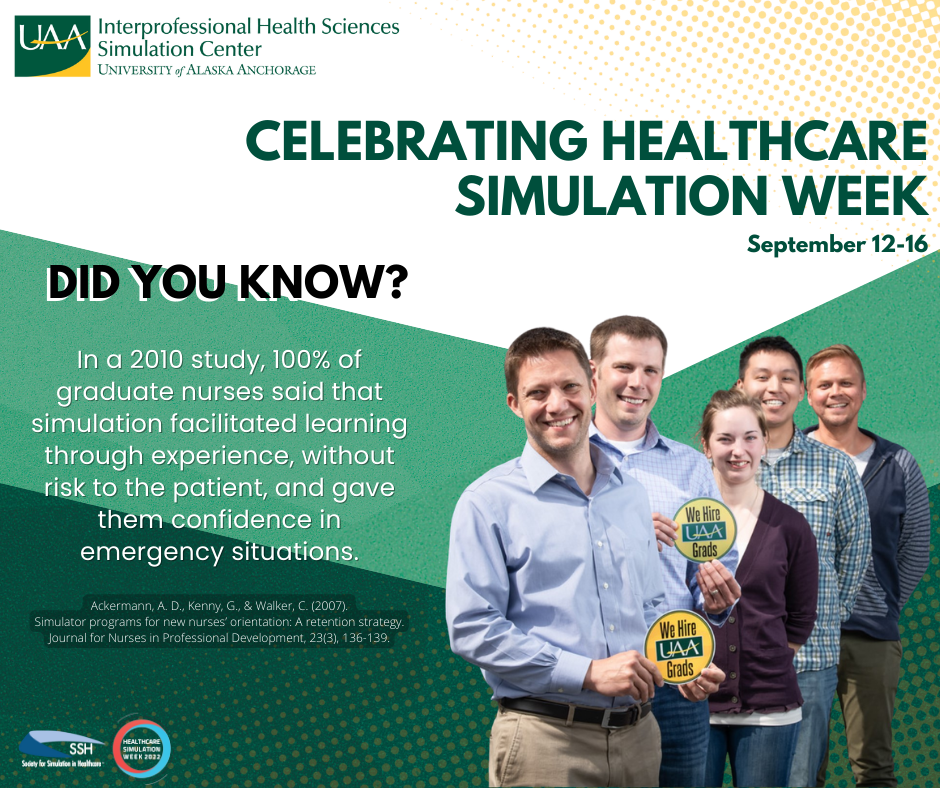
Simulation Facts & Information
Follow the UAA College of Health on Facebook, Instagram, and Twitter, where you can learn daily facts about the use of simulation in the healthcare industry
and interesting information about UAA’s very own simulation center.
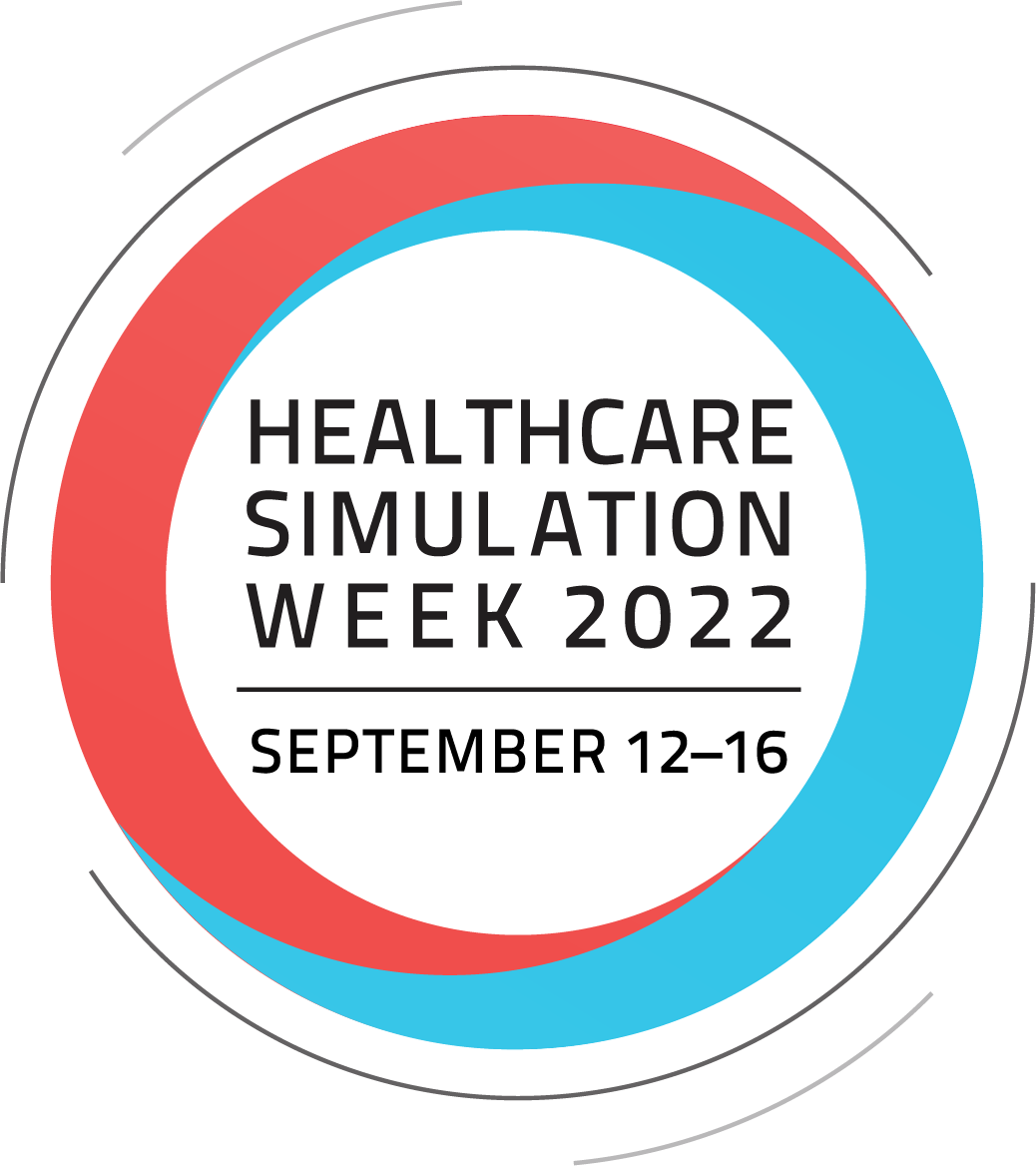
Join the Global Conversation
The Society for Simulation in Healthcare will be hosting numerous daily online presentations
addressing advocacy for, best practices in, and standards of excellence in a new era
of simulation. Learn more on the Simulation Week website and follow #HcSimWeek22 on social media.

CATEGORIES
TAGS
- Awards
- Behavioral Health
- Climate Change
- Community
- COVID-19
- Faculty Feature
- Food Security
- Forensic Care
- Giving
- Simulation
- Workforce Development
ACADEMIC UNITS
- Department of Human Services
- Division of Population Health Sciences
- Justice Center
- School of Allied Health
- School of Nursing
- School of Preventive & Therapeutic Sciences
- School of Social Work
PARTNER PROGRAMS
CENTERS & INSTITUTES
- Alaska Center for Rural Health and Health Workforce
- Alaska Interprofessional Distance Learning Consortium
- Center for Human Development
- Child Welfare Academy
- Interprofessional Health Sciences Simulation Center
- Project BLENDS
- National Resource Center for Alaska Native Elders
MEDIA INQUIRIES / STORY LEADS










